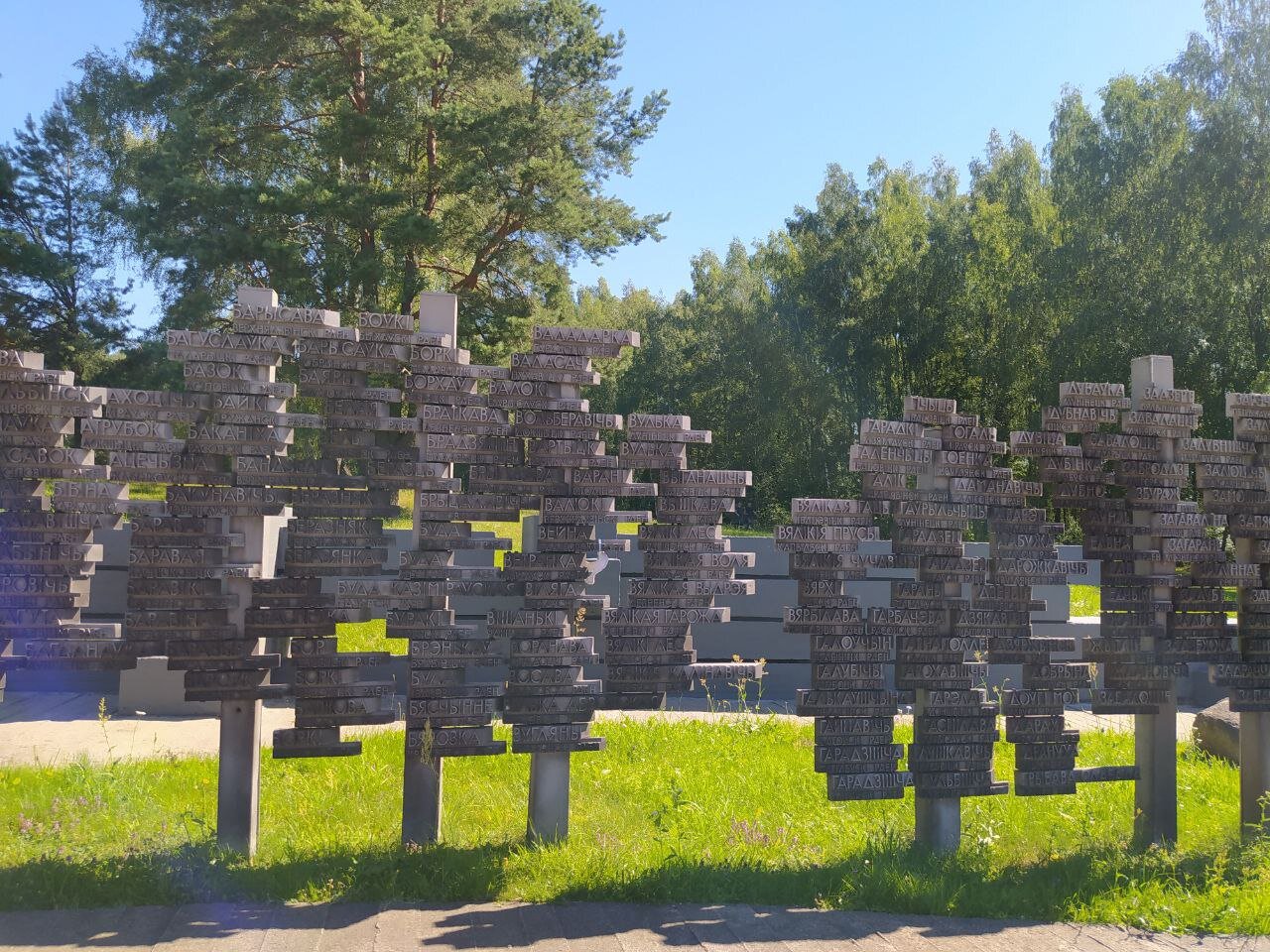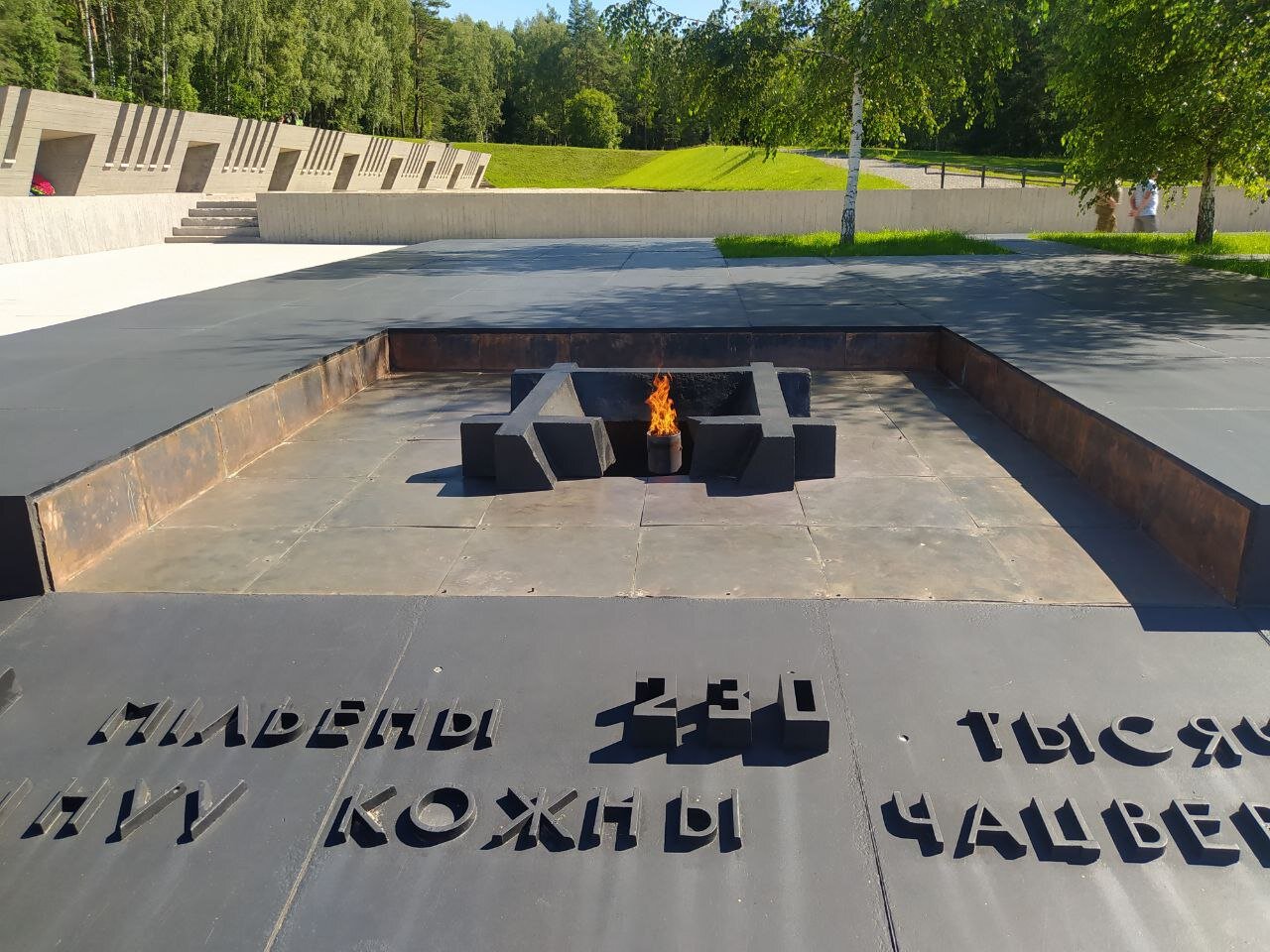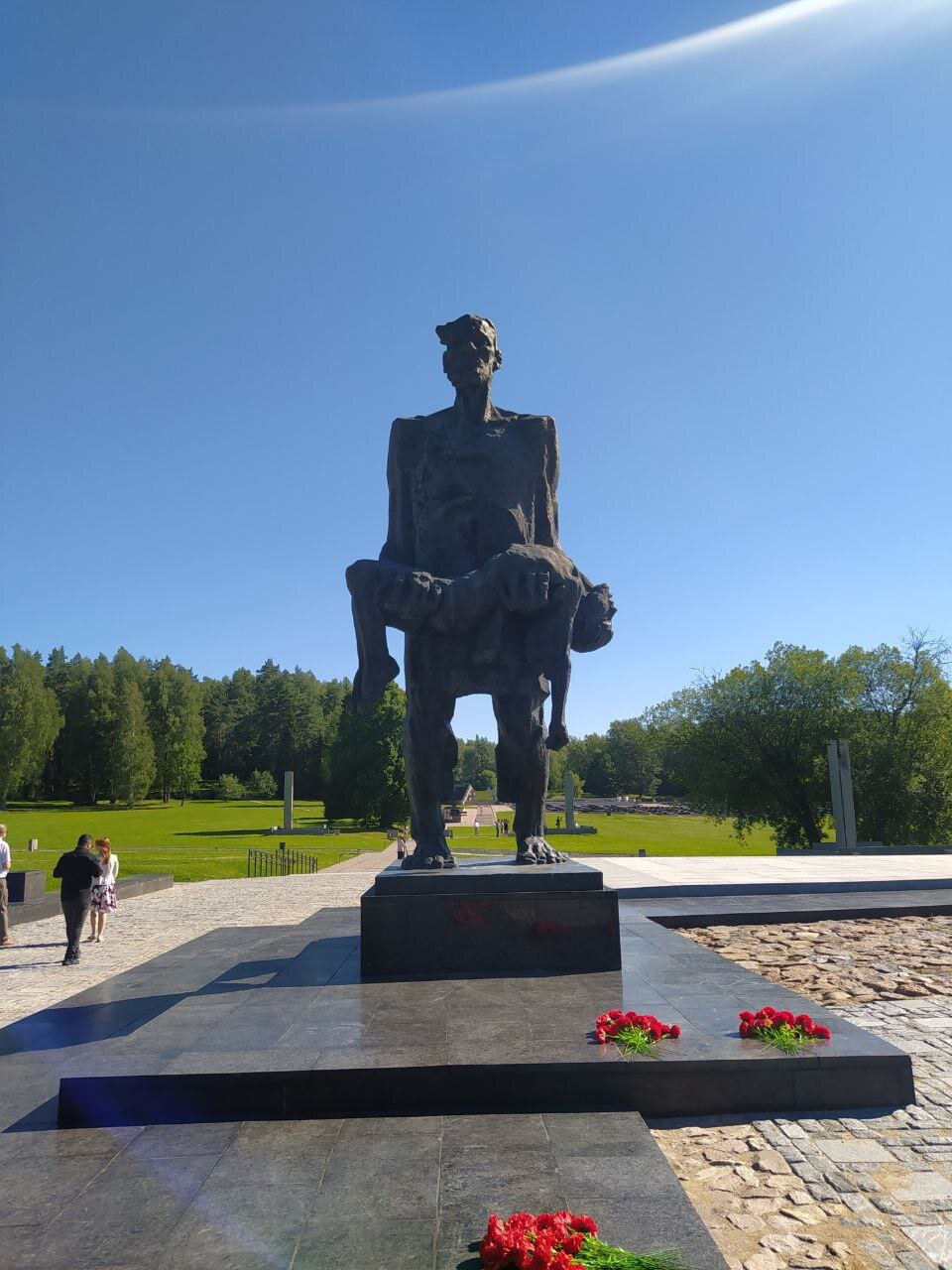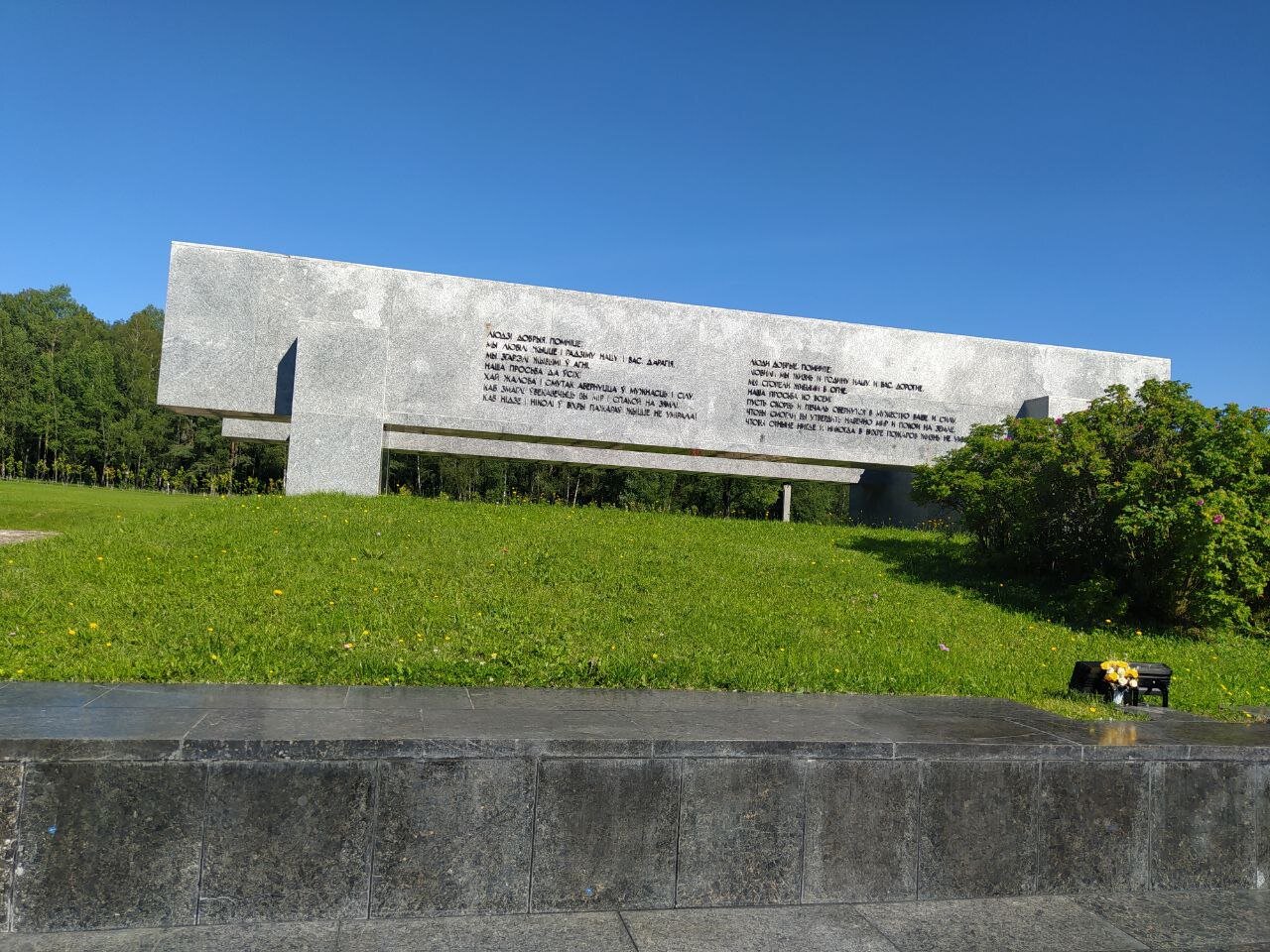The 1943 Khatyn massacre in Belarus must serve as an eye-opener

MINSK - As a group of journalists, we visited the Khatyn Memorial Complex on the way from Minsk to Vitebsk.
The memorial complex is situated in the Logoisk region of the Minsk area, 54 km from the Minsk—Vitebsk highway. The complex is located 5 km after turning into the complex and driving through the woods.
Khatyn is the name of a village where German Nazi invaders committed an indescribable crime among many other similar acts in Belarus. The invaders burned almost all 149 inhabitants of Khatyn on March 22, 1943. The memorial complex, built on the burned Khatyn village, is the terrifying symbol of Nazi crime on Belarusian soil. In other words, it represents hundreds of villages burned down in the area and similar massacres during World War II.
During the war, 5,295 villages were destroyed partially or completely. Some figures have put the number of villages at 5,454.
For example, in the Vitebsk region, 243 villages were burned down twice, 83 villages three times, and 22 villages four or more times. Also, in the Minsk region, 92 villages were burned down twice, 40 villages three times, nine villages four times, and six villages five or more times.
Researchers, both Belarusians and others, believe the details of the massacres in Belarus have not been fully studied.
149 citizens were burned alive in Khatyn village on March 22, 1943.
The Second World War, which its name is synonymous with the Nazi Germany ruled by Adolf Hitler, almost involved the entire world. It left 40,000,000–50,000,000 deaths. The Soviet Union, that Belarus was one of its constituent republics, lost between 24,000,000- 27,000, 000 people, most of them civilians. The Nazis invaded the Soviet Union on June 22, 1941.
It is the bloodiest and largest war in history. It started in Europe on September 1, 1939, when Germany invaded Poland. It ended in the summer of 1945.
The tragedies of World War II still haunt the world, especially its main victims. The Nazi concentration camps of Jews, including Auschwitz in Poland, are internationally famous. A lady explaining to journalists some details of the massacre in Khatyn said even Jews were brought to Belarus to be killed.

It was the first time in my lifetime that I was closely visiting a place where Nazi invaders had committed genocide. Though about 80 years have passed since the war, visiting Khatyn made me deeply feel everything I had read about the Second World War.
According to historians and researchers, Nazi soldiers rushed into Khatyn village and encircled it. The inhabitants did not know that on the morning of June 22, a Nazi motor convoy had been attacked on a motorway just 6 km away from Khatyn in which a German officer had been killed.
The inhabitants of Khatyn were innocent. All of them — young and old, women and children - were driven from their houses and forced into a shed at gunpoint. The Nazi soldiers did not even show mercy for women with infants in their arms.
When all people were finally in the shed, the door was locked and the Nazis covered the shed with straw, spilled benzine over it, and put it on fire.
Even imagining such a scene is dreadful and shocking. Visualizing that crying children and women were being burned alive is something that history can never forget.
The soldiers shot dead those who tried to escape from the flames of the fire. 75 of the victims were underage children. Reportedly, the youngest baby was only seven weeks old. The village was then looted and burned to the ground.
Statue of Joseph Kaminsky
The only adult witness to the Khatyn massacre was a 56-year-old man called Joseph Kaminsky. He was also wounded and burned in the Khatyn massacre but he recovered consciousness late at night when the Nazi soldiers had gone. Kaminsky found his son among the corpses. The boy had been fatally wounded in the abdomen and totally burned. He died later in the arms of his father.

The statue of Joseph Kaminsky is built on the site of Khatyn with his dead boy in his arms. The tragic story of this man is just an example of hundreds of thousands of others who witnessed the killings of their loved ones in Belarus.
The statue of Joseph Kaminsky (1887–1973) is the most heart-wrenching scene of the Khatyn Memorial Complex built in the late 1960s.
Only six people were identified as witnesses to the tragedy in Khatyn. They are the 56-year-old Kaminsky and 5 children. Among the children was a 12-year-old boy, Alexander Petrovich Zhelobkovich (1930–1994), who escaped from the village before the soldiers were able to surround it fully. His mother woke him up and put him on a horse on which he fled to a nearby village. Viktor Andreevich Zhelobkovich (1934–2020), a seven-year-old boy, also survived the fire in the shed under the corpse of his mother.
Reportedly, two girls from two families — Maria Fedorovich and Yulia Klimovich — survived the Khatyn massacre as well. They managed to leave the shed and crawl to the nearby wood. They were found later by the inhabitants of the village of Khvorosteny. Unfortunately, this village was also burned later to the ground and the two girls were killed.
Unfortunately, some locals collaborated with the invaders in carrying out the massacres.
Altogether, over two million people were killed in Belarus during the three years of Nazi occupation, almost a quarter of the country’s population. However, some estimates say a third of the Belarusian people were killed during the war.
Bells ring every 30 seconds to commemorate the rate at which Belarusian lives were lost during the war.
In the Katyn complex, each tomb symbolizes a particular village in the Republic of Belarus that was burned together with its inhabitants. Bells ring every 30 seconds to commemorate the rate at which Belarusian lives were lost during the war.
Greatly saddening
The Khatyn Memorial Complex which depicts the agonies of the victims of the war is greatly saddening and heartbreaking. What the Nazis did was not a war. It was a genocide. Their purpose was not just to capture countries but to depopulate them.
Burning so many villages to ashes in Belarus is unthinkable and unbelievable. The invaders left a deep wound in the hearts of the people.
Also, this bitter fact that Jews had been brought to Belarus and killed is a disgrace.
For the first time, I was informed that even underage children in Belarus were trafficked into Germany to work as slaves in factories.
The Soviets, including the Belarusians, became victims of the war though the Soviet Union had signed a non-aggression treaty with the Nazi Germany. But Hitler violated the treaty and invaded the Soviet Union. The Republics of Belarus and Ukraine were at the forefront, being geographically close to the invading Nazi Germany.

The current generation and future generations, not just in Belarus but in the entire world, should learn about the tragedies of the Second World War to make serious efforts to promote and consolidate peace in the world. In other words, the history is a lesson for the future.
The lady informing reporters about the memorial complex said her country adorns the war dead and, at the same time values peace.
Among foreign nationals visiting the Khatyn complex are the Germans. It shows that German nationals regret the crimes committed by their army at the time. The German nationals themselves were also one of the chief victims of the war.
According to figures, Germany lost 6,600,000-8,800,000 soldiers and civilians. They were the victims of the ruling Nazi Party, officially known as National Socialism, which created such a tragic situation for them. It is heartening that Germans are regretting their dark past.
The history is before our eyes. The great tragedy of the Second World War should serve as a light and eye-opener to guard peace and work diligently to avoid provocations, conflicts, and miscalculations.
Now, it is frightening that Russia and NATO are showing teeth to each other over the Ukraine war. The shadow of the war over Europe must disappear as soon as possible. It is essential to bring the Ukraine war to an immediate end. The Ukraine conflict is not a war between Russia and Ukraine, rather it is a war between the Slavic sisters.
It is also crucial to bring an immediate end to the Gaza carnage and lay the groundwork for the establishment of an independent and sovereign Palestinian state.
We must all work and pray for peace.
Leave a Comment